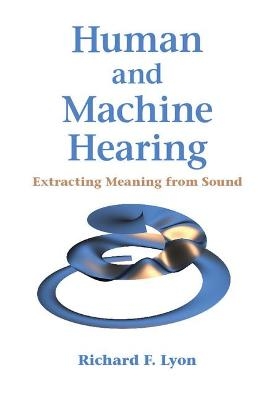
Human and Machine Hearing
Cambridge University Press (Verlag)
978-1-107-00753-6 (ISBN)
Human and Machine Hearing is the first book to comprehensively describe how human hearing works and how to build machines to analyze sounds in the same way that people do. Drawing on over thirty-five years of experience in analyzing hearing and building systems, Richard F. Lyon explains how we can now build machines with close-to-human abilities in speech, music, and other sound-understanding domains. He explains human hearing in terms of engineering concepts, and describes how to incorporate those concepts into machines for a wide range of modern applications. The details of this approach are presented at an accessible level, to bring a diverse range of readers, from neuroscience to engineering, to a common technical understanding. The description of hearing as signal-processing algorithms is supported by corresponding open-source code, for which the book serves as motivating documentation.
Richard F. Lyon leads Google's research and applications development in machine hearing as well as the team that developed camera systems for the Google Street View project. He is an engineer and scientist known for his work on cochlear models and auditory correlograms for the analysis and visualization of sound, and for implementations of these models, which he has also worked on at Xerox PARC, Schlumberger, and Apple. Lyon is a Fellow of the Institute of Electrical and Electronics Engineers and of the Association for Computing Machinery, and is among the world's top 500 editors of Wikipedia. He has published widely in hearing, VLSI design, signal processing, speech recognition, computer architecture, photographic technology, handwriting recognition, computer graphics, and slide rules. He holds 58 issued United States patents for his inventions, including the optical mouse.
Part I. Sound Analysis and Representation Overview: 1. Introduction; 2. Theories of hearing; 3. On logarithmic and power-law hearing; 4. Human hearing overview; 5. Acoustic approaches and auditory influence; Part II. Systems Theory of Hearing: 6. Introduction to linear systems; 7. Discrete-time and digital systems; 8. Resonators; 9. Gammatone and related filters; 10. Nonlinear systems; 11. Automatic gain control; 12. Waves in distributed systems; Part III. The Auditory Periphery: 13. Auditory filter models; 14. Modeling the cochlea; 15. The CARFAC digital cochlear model; 16. The cascade of asymmetric resonators; 17. The outer hair cell; 18. The inner hair cell; 19. The AGC loop filter; Part IV. The Auditory Nervous System: 20. Auditory nerve and cochlear nucleus; 21. The auditory image; 22. Binaural spatial hearing; 23. The auditory brain; Part V. Learning and Applications: 24. Neural networks for machine learning; 25. Feature space; 26. Sound search; 27. Musical melody matching; 28. Other applications.
| Erscheinungsdatum | 23.06.2017 |
|---|---|
| Verlagsort | Cambridge |
| Sprache | englisch |
| Maße | 185 x 260 mm |
| Gewicht | 1380 g |
| Themenwelt | Informatik ► Theorie / Studium ► Künstliche Intelligenz / Robotik |
| ISBN-10 | 1-107-00753-4 / 1107007534 |
| ISBN-13 | 978-1-107-00753-6 / 9781107007536 |
| Zustand | Neuware |
| Haben Sie eine Frage zum Produkt? |
aus dem Bereich


